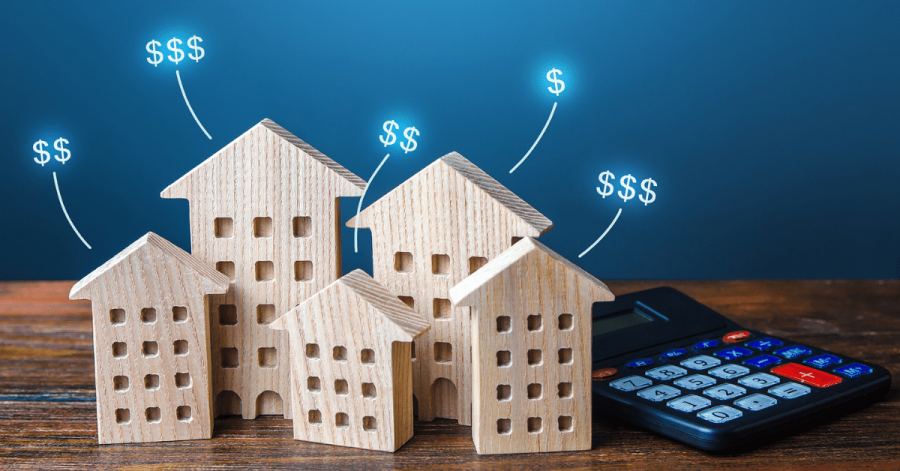
What’s the worth?
That’s one of the main questions real estate investors want to know when it comes to investing in a piece of real estate. Whether it is a single building like a home, a set of buildings in a larger complex, a piece of standalone property, or a combination of a building and property, investors want to know what it’s worth.
In real estate, the worth of something is called valuation. Valuation is a process that involves figuring out what amount of money should be connected to a building and/or piece of property.
This fair calculation of the worth of a piece of real estate gives investors the information they need to make an offer, but it also allows them to make decisions on the future of that real estate. Future decisions such as how much to budget for renovations or repairs and how much potential the real estate has, for example.
Real estate investors want to know that their piece of real estate will make them money ongoing and in the long term, so there is a lot to consider before moving forward with an offer.
Valuation Specifics
When it comes to understanding valuation, two other terms that are helpful to understand in relation are price and cost. Valuation, price, and cost in real estate are very different things in terms of money and meaning:
- Valuation is the process of figuring out the worth and determining what amount is fair for the real estate.
- Price is what the seller lists the real estate for and then what the buyer actually pays.
- Cost is what amount of money it would take to build an equivalent piece of real estate currently, as is, right now.
For the purposes of this article though, we’re going to focus on valuation. Since valuation is the process of figuring out a piece of real estate’s current worth, a lot of factors are involved, so it’s arguably the most complex in terms of understanding.
The housing market is directly connected to the greater economic state of the country, but there is a laundry list of items that affect the valuation of a building and property. Because of this, there are actually three different types of real estate valuation approaches:
- Fair Market Value
- Appraised Value
- Assessed Value
Approach #1: Fair Market Value
Fair market value is how the piece of real estate in question compares to equivalent pieces of real estate in a specific area. If you’ve ever searched for your own home on a public real estate website like Zillow.com or Realtor.com, you have seen some level of fair market value calculation.
For the valuation to be determined in this approach, a number of aspects of the real estate are compared to similar properties:
- Total square footage of the building
- Total acreage or lot size
- Number of bedrooms
- Number of bathrooms
- Number of floors
- Basement
- Attic
- Garage
- Square footage of the rooms
- Size of the kitchen
- Curb appeal
- Neighborhood accessibility rating
- Neighborhood school rating
- Neighborhood safety rating
- Vicinity to a park or green space
- Vicinity to public attractions
- Year the house was built
- Any known renovations
This approach is trying to compare apples to apples, one piece of real estate to another.
Fair market value gives investors a statement like “a piece of real estate in this neighborhood of this size with this amount of property and these features should go for $15/sq foot.” However, this is an estimate, and some factors cannot be fully calculated with this approach.
Approach #2: Appraised Value
The appraised value approach actually involves hiring a professional called an appraiser. These are trained and experienced professionals who will take not only all the aspects of fair market value discussed above into consideration but also the overall condition of a piece of real estate.
This allows appraised value to be a little more accurate than fair market value because it takes renovations, improvements, and upgrades into consideration. However, it also takes disrepair, structural conditions, outdated appliances or design features, and maintenance issues into consideration as well.
Appraisers are extremely thorough in their estimation, and there is a fee associated with their services.
Approach #3: Assessed Value
The assessed value approach is completed by the county, and it is a public record. This is directly connected to the taxes attached to a piece of real estate. This valuation is also completed by a professional called a county assessor or through a county assessor’s office.
While a lot of similar factors are taken into consideration with assessed value as are with fair market value, a lot of specifics are not included.
Investors have full access to public assessed value records though, so they can track the taxes set on a piece of real estate all the way back to the first year on record.
Investors are encouraged to take all three approaches and amounts determined into consideration when making an offer, but at the end of the day, it’s all about the amount that a seller will accept.
For home investors, making the right offer on a home is only half the battle. First, you need to find someone who is looking to sell. When it comes to finding good sellers, that’s where Investor Nitro lead generation is your best tool. Contact us today to learn more.
